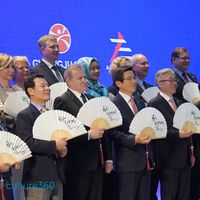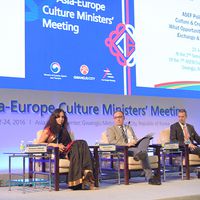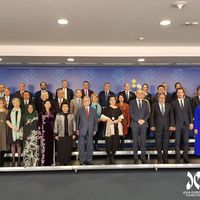From Cultural Diplomacy Towards Cultural Co-operation: What Future Directions for Asia-Europe Relations?
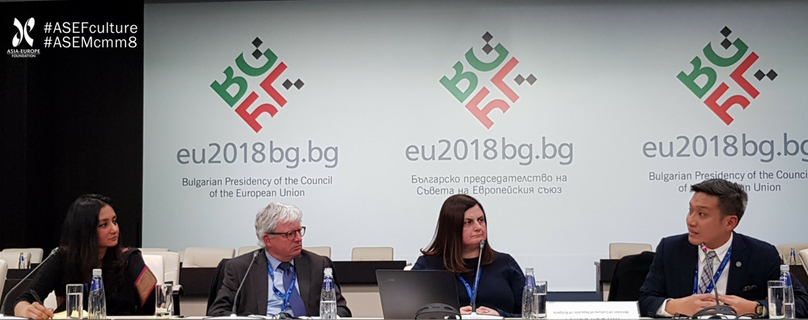
There has been significant progress in the area of cultural dialogue, beginning with earlier conversations on the role of culture in the creative economy, to present discussions on how culture can help build and strengthen people and communities across borders. In line with this development, culture has become an essential element of strategic and comprehensive approach to international relations in Asia and Europe. In 2016, the Council of the European Union (EU) adopted the EU strategy for international cultural relations. In South East Asia, one of the key strategies of ASEAN’s (Association of Southeast Asian Nations) Strategic Plan for Culture 2016-2025 included focus on culture and intercultural understanding to enable ASEAN to become a proactive member of the global community. Amidst such priorities, however, it remains to be seen if the aspirational goals of cultural cooperation can indeed be realised, and if so, how best to operationalise them in ways that create positive value for all stakeholders involved.
Discussions around this topic were the focus of the ASEF Policy Panel organised at the Senior Officials’ Meeting of the 8th Asia-Europe Culture Ministers’ Meeting (ASEM CMM8) on 28 February 2018 in Sofia, Bulgaria. This Ministerial meeting was organised by Bulgaria under the aegis of its Presidency of the Council of the European Union (January-June 2018) and in the framework of the Asia-Europe Meeting (ASEM). As the only permanent institution of ASEM, Asia-Europe Foundation (ASEF) actively works towards bringing views and concerns of civil society in Asia and Europe with reflections at the ASEM level. The Ministers at ASEM CMM8 acknowledged the meaningful inputs that emerged from the panel discussion (Chair’s Statement - ASEM CMM8).
The panel brought together Ms. Tzvetelina IOSSIFOVA, Chair of the Board of Founders, Red House Centre for Culture and Debate; Mr. Andrew MURRAY, Director, European Union National Institutes for Culture (EUNIC) Global Office in Brussels; and, Mr Kennie TING, Director, Asian Civilisations Museum (ACM, Singapore) & Chair, Executive Committee of the Asia-Europe Museum Network (ASEMUS). It was moderated by Ms Anupama SEKHAR, Director, Culture Department, ASEF. The discussions at the panel brought forward constructive ideas for deliberation at the Ministerial meeting.
People-to-people exchanges as the starting point
Mr Kennie TING shared that the Museum’s mission of cultural diplomacy has impacted its work tremendously. Specifically, a deeper focus on historic exchanges between cultures and civilisations has helped ensure that the Museum’s collections of art necessarily demonstrate proof of historical cultural exchange between east and west. Beyond conceptualisation and design, the Museum ensures people-to-people collaboration by insisting on co-curating exhibitions with its partner museums abroad. It also reaches out directly to the community, bringing together a diverse range of people from across the value chain to work collaboratively on its exhibitions and associated programmes.
Mr TING emphasised that impactful cultural diplomacy needs to begin with cross-cultural, people-to-people collaborations and exchange that respond to and address real needs. This may be facilitated through research scholarships, as well as by expanding professional exchange programmes to allow more curators and cultural practitioners to work on projects outside of their localities and together with peers from other countries.
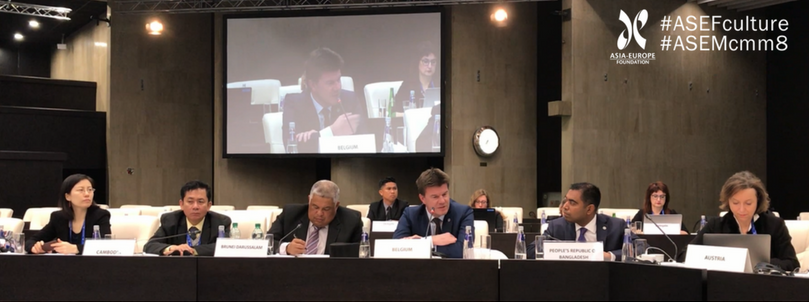
Building on a common understanding of culture
Mr Andrew MURRAY highlighted a worrying observation that there remains little agreement amongst states, and even amongst cultural practitioners, on the scope and definition of cultural diplomacy and cultural relations. This lack of clarity and common understanding of the role of culture has resulted in cultural diplomacy being treated as little more than national branding.
The Joint Communication to the European Parliament and the Council from June 2016, which strongly advocates that culture be placed at the foreground of the EU’s external relations, provides a useful redefinition of culture – one that is more inclusive. Not only does it refer to the arts and to exchange, it also involves science, education, and tourism, and is underpinned by the values of mutuality and reciprocity. Beyond the promotion of national interests, it refers to the building of trust and understanding between peoples as the purpose of and basis for cultural relations.
The question, then is, how to draw upon the strength of bottom-up practices to inform cultural strategy. Some examples include Cairo, with its artists-in-residence programmes and facilities, and Tokyo, with its network of cultural institutes. These good practices can help inspire and shape our approach to concepts such as a European (or Asian) House of Culture, an idea especially popular among politicians of the smaller EU states, that promotes regional resource-sharing.
Harnessing the power of culture at its source
Echoing Mr TING’s remarks, Ms Tzvetelina IOSSIFOVA reminded the audience that culture, at its core, is built by people – not institutions. In fact, it is independent artists and organisations that are often the most spontaneous and proactive in cultural cooperation; they are also where the best ideas and initiatives often originate from. In her experience, the success of Red House can be attributed to personal initiative and interpersonal connections, working collectively to support one another.
This means cultural policy and cultural diplomacy cannot merely revolve around the issue of monetary funding but must take into serious consideration the human condition and people’s aspirations and strive to help them come true. Ms IOSSIFOVA suggested that learnings from the experience of independent artists and organisations could be considered by state actors to facilitate opportunities for them to pursue their work in cultural cooperation. A good starting point could be the lowering of barriers to travel, making it less challenging for cultural operators to obtain travel visas to perform collaborative work across national borders.
Models for collaboration: State and society
Panel moderator Ms Anupama SEKHAR took the discussion a step further, challenging the panellists to share their thoughts and observations on collaborative models between state, with its foreign policy objectives and society, with its diverse goals and needs. A common theme that surfaced was that states can and should play the role of funder, catalyst, and facilitator of cultural relations, but “at arm’s length”. This means supporting individual operators and organisations in ways that encourage cultural relationships to grow organically and continue to meet authentic, human needs and aspirations, with no overt or excessive influence on the organisation or programming of the cultural product.
Mr TING affirmed this principle, citing ACM as an example of how even a state institution can be supported in ways that allow flexibility when implementing cultural programmes. In Singapore, support for cultural diplomacy is extended in the form of funding, and even ACM as a state institution is required to pitch for this funding. However, once funding is approved and broad criteria are agreed upon, the flexibility to collaborate across institutions and geographies lies wholly under the purview of the museum professionals.
For Ms IOSSIFOVA, the challenge remains that cultural operators at the grassroots levels are often preoccupied with survival, whereas government actors often have to prioritise political imperatives. Her recommendation was for governments to be present where the needs existed and be receptive and open to them.
Mr MURRAY cited an example of how governments traditionally tend to view culture as a public diplomacy tool, which at times does indeed work to mutual benefit but also means only partnerships that serve foreign policy objectives are likely to receive opportunities and support. This presents missed opportunities for cultural relations to take root and grow. At the same time, he acknowledged that the presence of independent cultural actors inevitably poses risks for governments – risks that governments must be prepared to bear if they are to make progress in this area.
In support of deeper cultural relations, a member of the audience suggested encouraging states to support more joint-funding projects with little to no state intervention, but that comes with a prerequisite of having to involve a partnership between two or more individuals or entities from different geographies.
Conclusion
Culture, in its ever-changing forms, provides a safe space for unsafe ideas to be tested and negotiated. As we move toward a culture of cultural cooperation, existing frameworks and institutions ought to be reviewed and creatively reworked to ensure equity and equal partnerships between stakeholders. State actors can find plenty of value in embracing bottom-up ideas that respond to and address real human needs and aspirations.
ASEM and ASEF, too, continue to embody and live out the spirit of multilateralism by operating on joint funding from ASEM partners, and redistributing that funding for the direct benefit of artists and citizens.
This article was commissioned by ASEF and prepared by Daniel HO Sheng.
For the concept note and programme of the ASEF Policy Panel, go to: ASEFpolicypanel-ASEMCMM8.
The event was also covered live on Twitter and Facebook via social media handles #ASEFculture and #ASEMcmm8.
The ASEF Policy Panel is part of an ongoing series of conversations on cultural policy issues of common interest and mutual relevance for Asia and Europe. The 1st ASEF Policy Panel took place at the 6th ASEM Culture Ministers’ Meeting (October 2014, Rotterdam, Netherlands). The idea for the ASEF Policy Panel series was born at the Europe-Asia Roundtable Series/EARS (September 2014, Helsinki, Finland).
Similar content
19 Jul 2016
19 Mar 2019
from - to
22 Jun 2016 - 22 Jun 2016
posted on
05 Jul 2011
By Preeti Gaonkar & Kerrine Goh
19 Oct 2018

